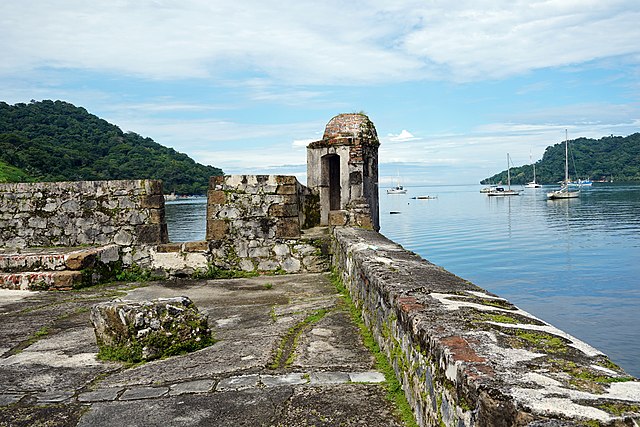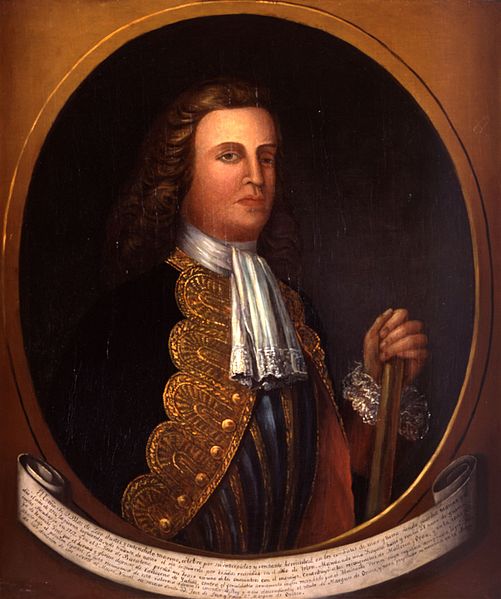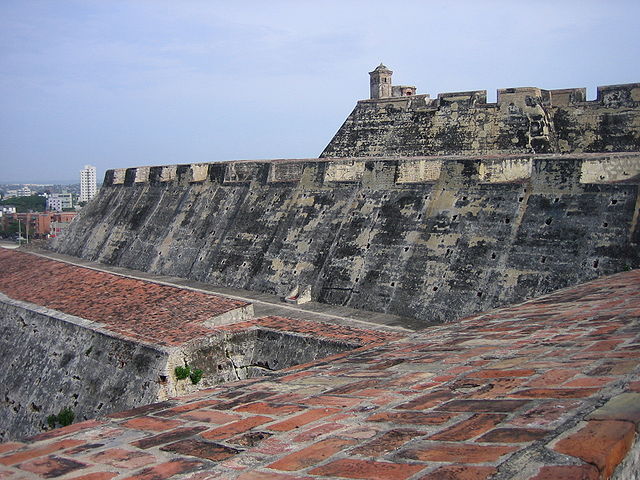The invasion of Cuba took place between 4–5 August and 9 December 1741 during the War of Jenkins' Ear. A combined army and naval force under the command of Admiral Edward Vernon and Major-General Thomas Wentworth arrived off Cuba and fortified positions around their landing site at Cumberland Bay. Despite facing no serious opposition, neither commander felt prepared to advance on the Spanish settlement at Santiago de Cuba. Harassed by Spanish raids and with a mounting sick list, the British finally evacuated the island after several months of inactivity.
Castle of El Morro on Santiago de Cuba
George Stadt Camp near the River Guantamano and the intrenchments made on the adjacent hills, 1741
The War of Jenkins' Ear was a conflict lasting from 1739 to 1748 between Britain and Spain. The majority of the fighting took place in New Granada and the Caribbean Sea, with major operations largely ended by 1742. It was related to the 1740 to 1748 War of the Austrian Succession. The name was coined in 1858 by British historian Thomas Carlyle, and refers to Robert Jenkins, captain of the British brig Rebecca, whose ear was allegedly severed by Spanish coast guards while searching his ship for contraband in April 1731.
Ruins of the fortress of San Jeronimo, Portobelo
Spanish Admiral Don Blas de Lezo 1741
Fortress of San Lorenzo el Real Chagres
Castillo San Felipe de Barajas (Cartagena). This (then incomplete) fortress was integral to Spain's effort to maintain the link with its colonies via the Atlantic sea lanes.






